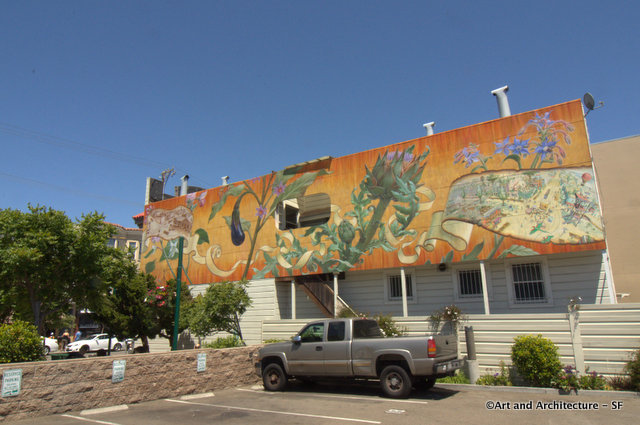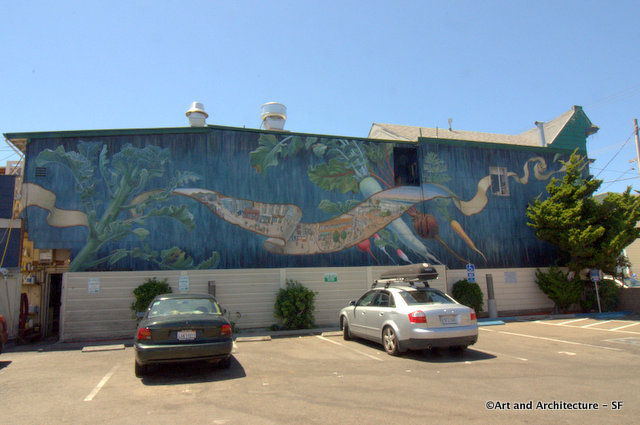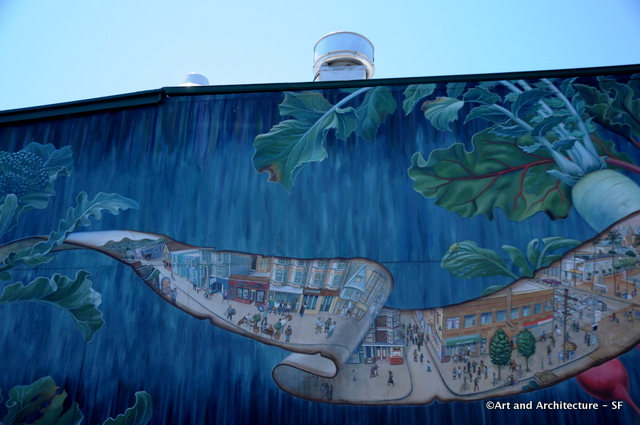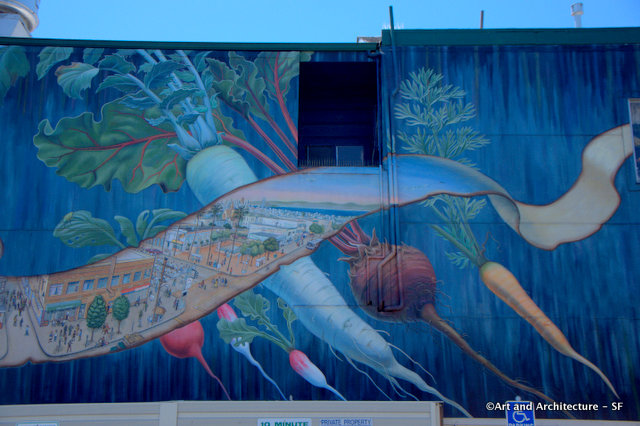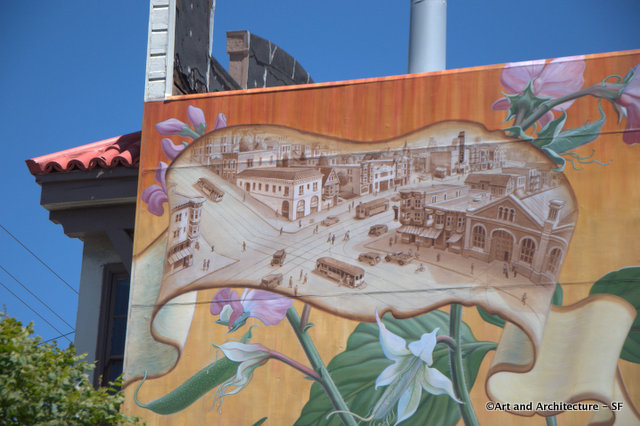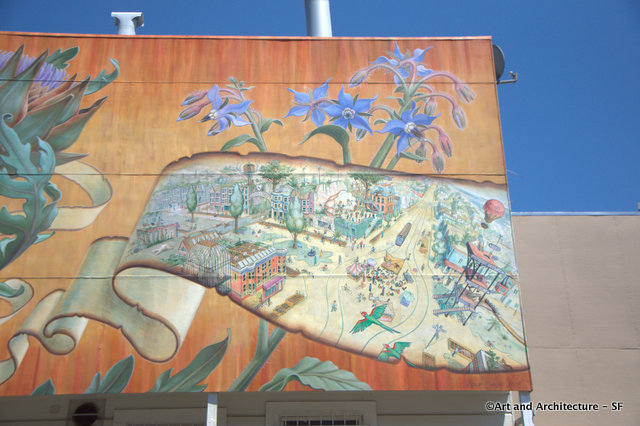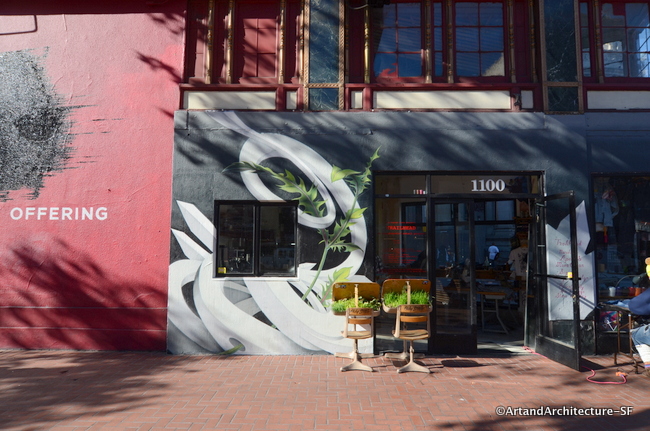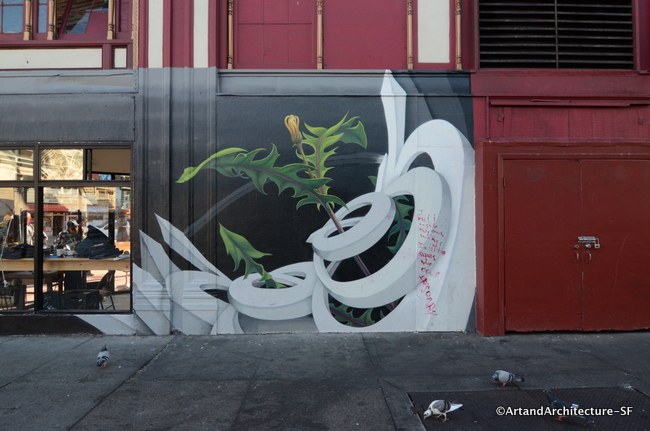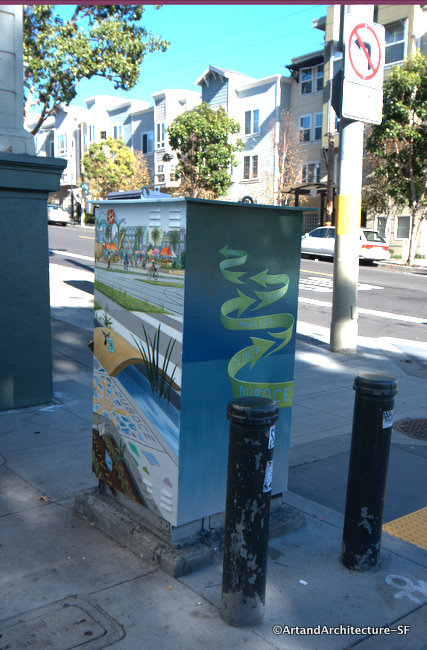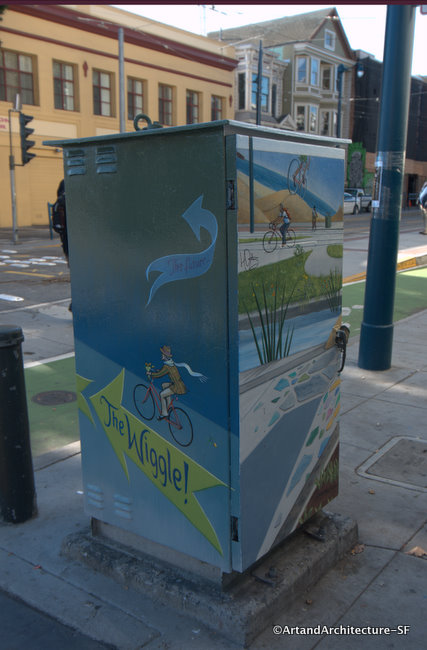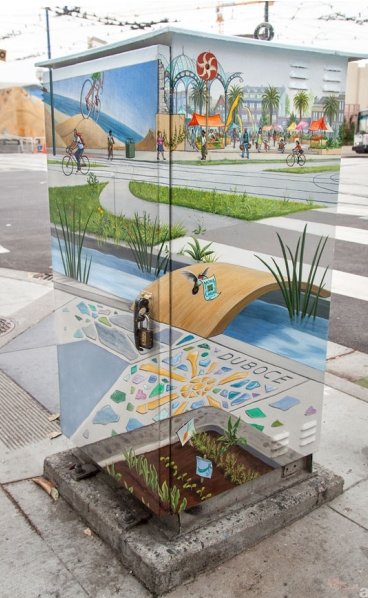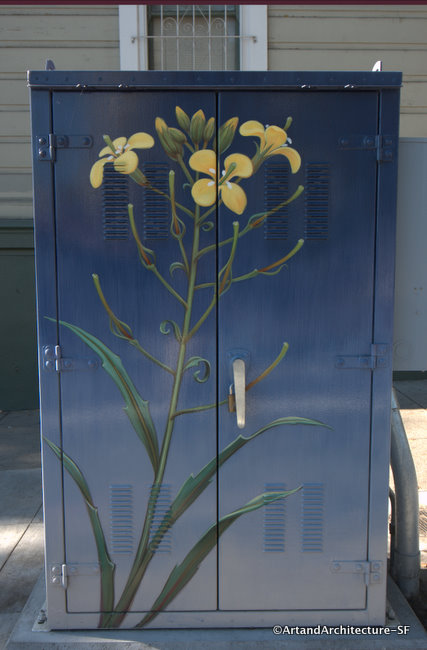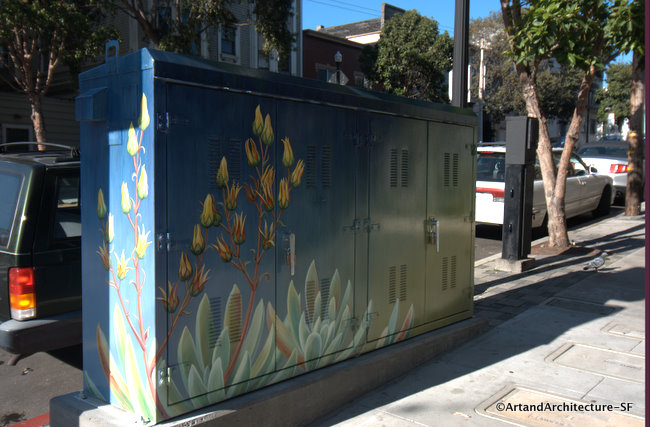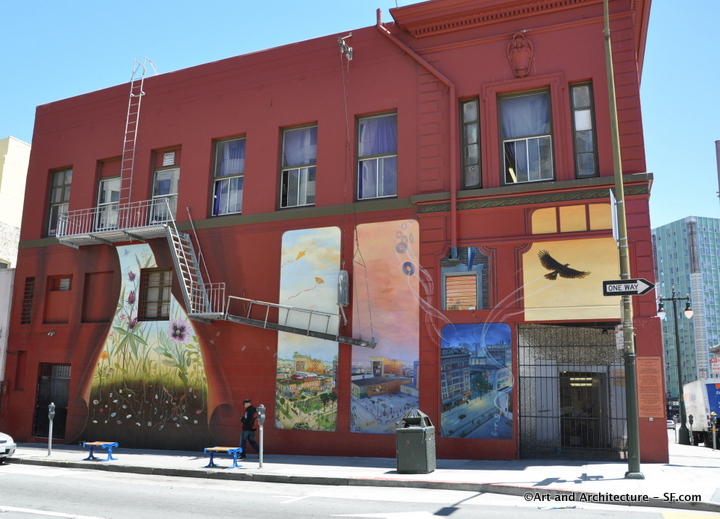Castro/Duboce Avenue/Nob Hill
Back of
2020 Market Street
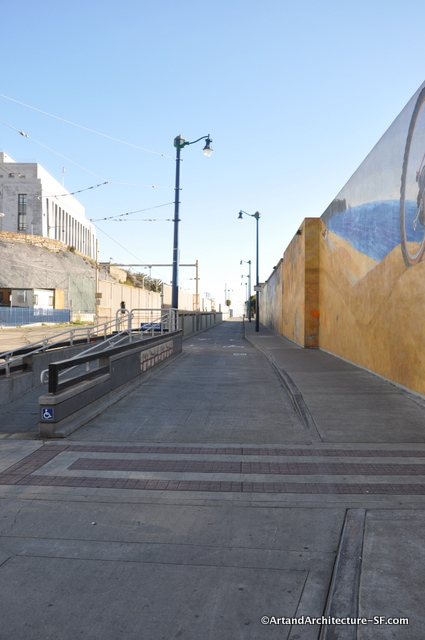
In 1972 BART built the Market Street subway, including Muni Metro. Along the Duboce Avenue tunnel entrance was a single eastbound lane for cars. During the 1994 closure of the street, for construction, The Bicycle Coalition worked to show that this street, which when used by both cyclists and cars was highly dangerous, was better served as a bikeway. They were successful.
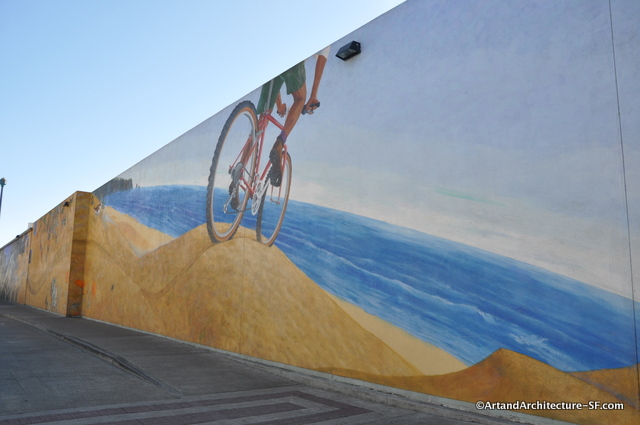
In 1995 Peter Tannen of the SF Bicycle Coalition obtained grant funds and Joel Pomerantz, then, co-founder of the bicycle coalition but now, leader of ThinkWalks, was recruited to produce a mural celebrating the first street closed to cars specifically for bicycles.
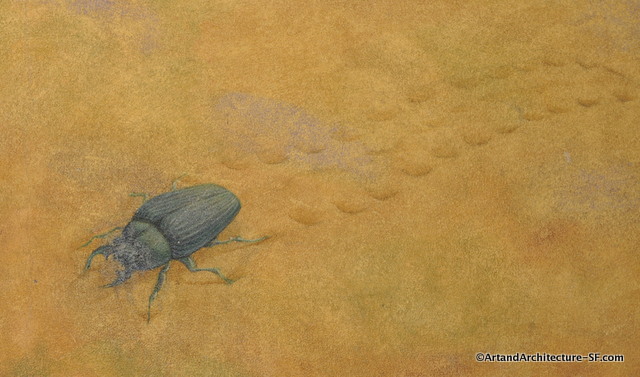 Joel convinced Mona Caron that she was capable of doing a mural and this was the result. Mona has been in this site many times before, however, this was her first mural. The mural is on the back side of the Market Street Safeway along the Duboce Bike Trail where muni heads underground.
Joel convinced Mona Caron that she was capable of doing a mural and this was the result. Mona has been in this site many times before, however, this was her first mural. The mural is on the back side of the Market Street Safeway along the Duboce Bike Trail where muni heads underground.
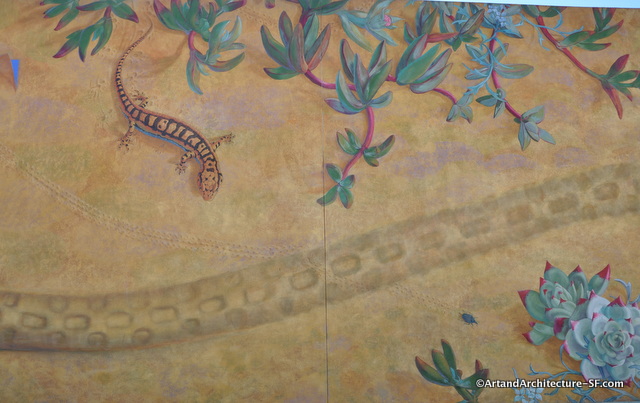
According to Mona Caron’s website “At the center of the block long, 6,075 square foot mural is a depiction of the bikeway itself, (complete with its mural,) in geographic and historical context along the ancient streambed which cyclists follow to avoid hills. (The zig-zagging route is now known as “the Wiggle.”) To the east of the Wiggle is Downtown, to the West, residential neighborhoods, Golden Gate Park and, finally, the beach.
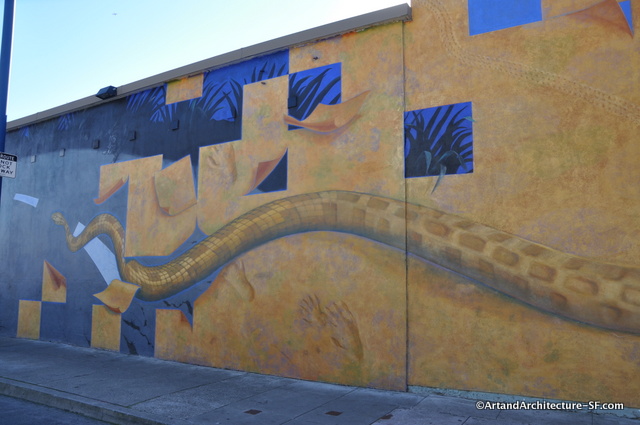
At the east end of the wall (downtown), Market Street’s bicycles are seen transforming into pedal-powered flying machines which rise out of the morass of pollution and gridlock. The scene alludes to the subversive nature of Critical Mass in particular, and generally symbolizes the freedom experienced by those with visions of alternatives to the status quo, represented in the mural by frowning corporate skyscrapers. Each of the flying contraptions trails its pilot’s dream of utopia in the form of a golden banner. The whole rest of the mural, westwards from this scene, starts in the shape of one of these golden banners, suggesting that this mural depicts just one of many ideas that make up our collective vision. Ours happens to deal with the issue of transportation, and the City depicted in the rest of the mural is a traffic and pollution free one, where the community takes back the space which now fragments it: the street.”
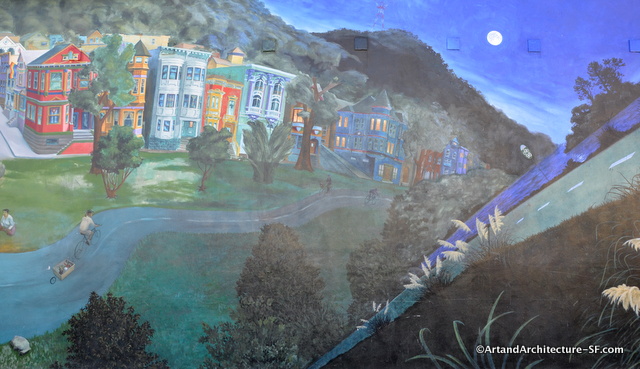
There is a fabulous, color photo, panel by panel, description of this mural, with stories, trivia and great bits and pieces of San Francisco history available at the Thinkwalks store.
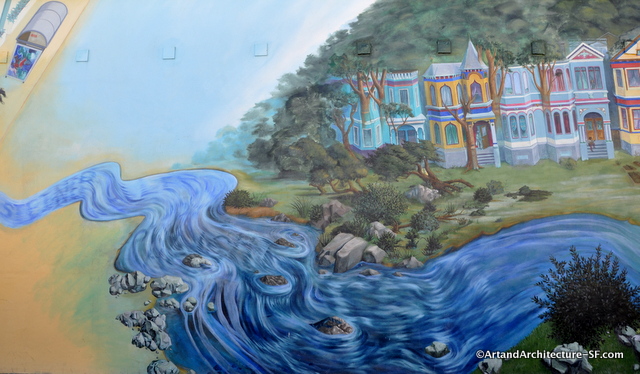
*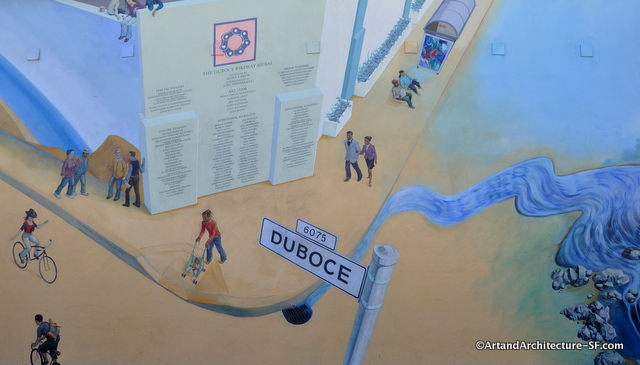
*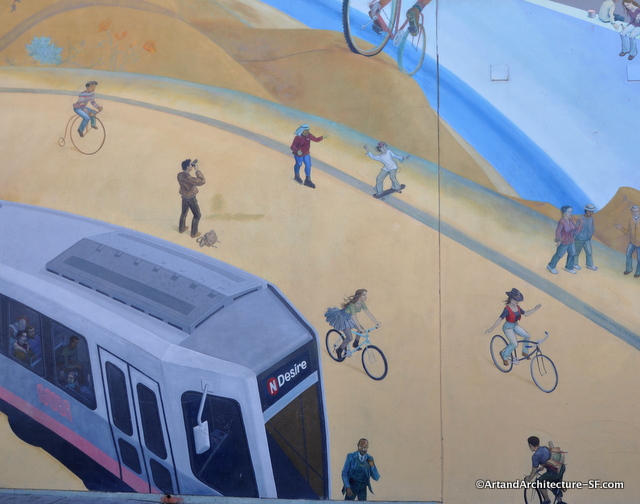
*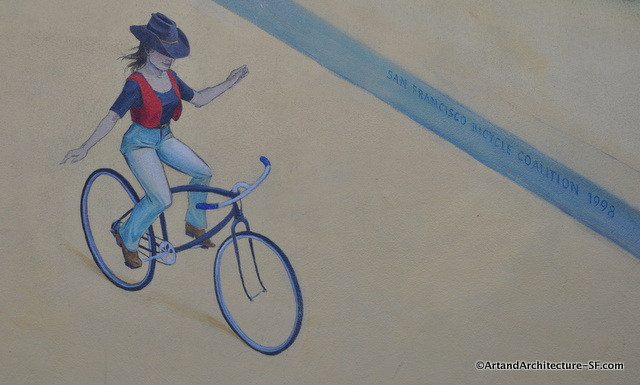 *
*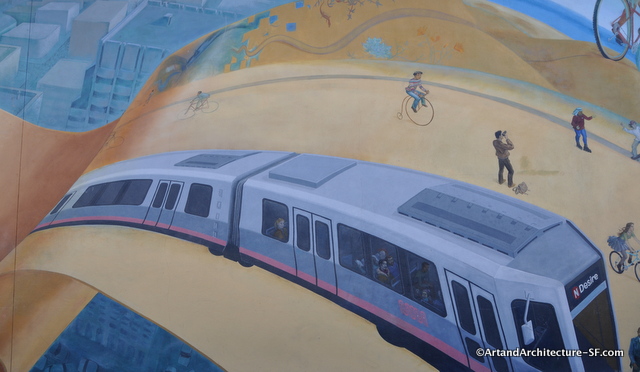 *
*
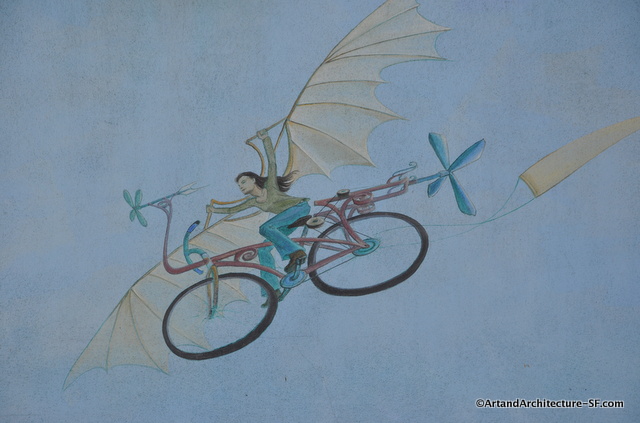
*
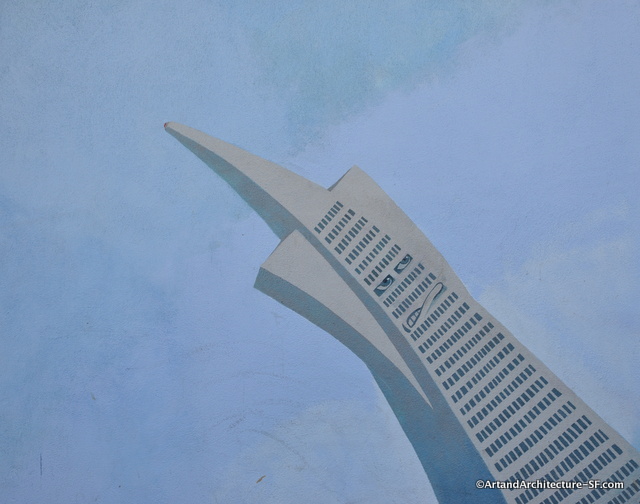
Check out this post about the utility boxes across the street.
